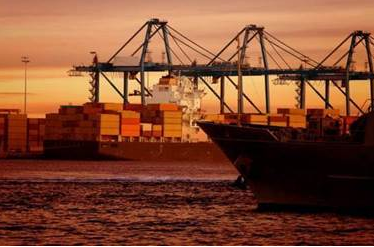
AIR FREIGHT
Globally, and as of 2nd July, the difference between ocean and airfreight rates has narrowed to its lowest level since the third quarter of 2022, as container supply chains continue to come under pressure.
Turns out that, on a global level, ocean rates are now only six times lower than airfreight rates.
This means airfreight rates (historically, they have been around 12-15 times more expensive than ocean ones) are at their most attractive level compared to ocean ones since the third quarter of 2022 when a period of port congestion and container shortages caused a spike in container shipping pricing.

SEA FREIGHT
In the air, all Asian trade lanes are recording a very high activity.
The latest figures show that rates (like demand) in the Asia-Pacific region far exceed their levels of a year ago: +32% from China and +18% from Hong Kong.
It also seems that part of the air freight shipments that cannot leave China on time are now flown from Vietnam, where spot rates to Europe have increased by 143% in one year (WorldACD), while the volumes transported are up by 28%.
Other “secondary” markets are also growing strongly: rates in Malaysia have increased by 83% in one year, 46% in Indonesia, and 43% in Thailand.
Three factors can explain this sustained activity:
- the undeniable surge in e-commerce,
- a modal shift effect from the (saturated) ocean market
- and the anticipation of end-of-year orders by certain European importers.
In fact, the recent deterioration in the ocean shipping market could be pushing more cargo to airfreight following the impact of the Red Sea crisis.
In fact, shippers face significant shortages of both air and ocean freight capacities due to strong demand and disrupted sea freight services.
Those disruptions to container shipping services, in part caused by the attacks on vessels in the Red Sea, have been exacerbated further in recent weeks due to port congestions and vessel capacity shortages in certain key markets, driving more cargo owners to air cargo solutions.
The big difference between the situation in 2022 during Covid, when rates exploded, and today, is that belly capacity of passenger planes has normalized.
Rates should, therefore, not return to their aberrant peaks of two years ago.
However, e-commerce companies such as Temu and Shein need the equivalent of 88 Boeing 777 freighters to export their products every day, roughly the same as Amazon.
The rise of the two Chinese e-commerce giants is so rapid that it is seriously shaking up the world of transport.
Record demand, high rates: the activity of Temu and Shein cannot explain everything, but undoubtedly appears to be one of the main causes of the unexpected resurgence of air freight activity, and therefore high rates. The fact is that since their growth is not over, their influence on the market could therefore intensify in the coming months.
According to TIACA (The International Air Cargo Association), e-commerce is expected to further swallow up huge amounts of air cargo capacity from Hong Kong and Southern China this Fall.
It also estimates that part of the transatlantic trade capacity, which is not very profitable, will be redeployed to the Asian region.


SEA
The current chaos in the container shipping industry is due to port omissions and skipped sailings.
Detours around the Cape of Good Hope, caused by the Red Sea situation, have tightened ship and container availabilities.
Despite new buildings, cargo demand exceeds supply.
Geopolitical tensions and inflation exacerbate issues, making market stability unpredictable, with significant impacts on Asia-Europe services.
Therefore, in the sea freight market, there is a “déjà vu” feeling as rates are – again – soaring.
There are several reasons to this increase:
- After running down post Covid inventories, importers are restocking
- Tariff risks in Europe and USA drive earlier shipments
- Slower vessel speeds add transit days that increase the risk to timely inventory
- Replenishment & higher demand drive earlier/greater cargo shipments
- Poor schedule reliability (currently 50%) also tends to drive earlier & larger shipments
Global goods trade is showing signs of accelerating after last year’s slump, pushing up shipping rates and giving some supply-chain managers flashbacks to the demand spike that disrupted international commerce three years ago.
This situation might very well bring back bad memories of the chaos and sky-rocketing ocean freight rates during the pandemic.
Shippers have learned lessons from Covid-19 and some are bringing their imports forward, ahead of the peak season.
In fact, ocean shipping began the year already stretched by Red Sea attacks that forced carriers to send their vessels the longer way around southern Africa rather than through the Suez Canal.
A.P. Moller-Maersk A/S, the world’s No. 2 container line, has estimated the industry’s capacity loss at 15%-20% this quarter on routes to northern Europe from Asia.

Moreover, importers and exporters across Asia, the US and Europe typically see shipments increase from July to September as retailers look to restock before back-to-school, Halloween and year-end holiday sales seasons. That spurt of orders looks to be happening now, at a time when spare container capacity is limited.
As a consequence, vessels and bookings are already completely full and containers’ rates reflect the tightness.
Ocean freight rates of the China–Europe trade lane jumped by 324% year on year in May, while from China to the US West coast there was a 309% increase.
The current price increase is primarily driven by capacity shortages and an unexpected demand increase, lacks support from robust underlying demand, while high-interest rates and labor market concerns are expected to curb consumer spending.





